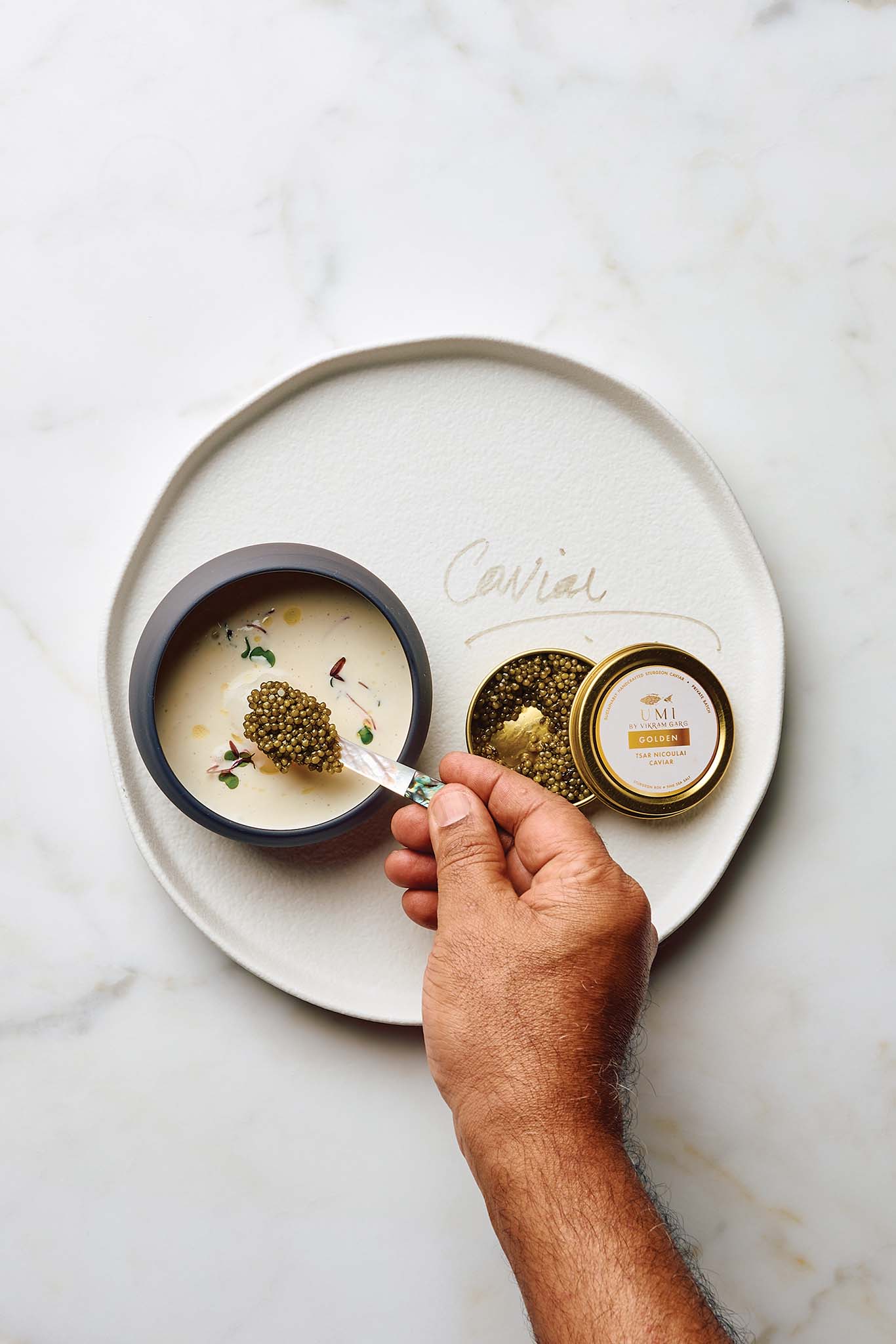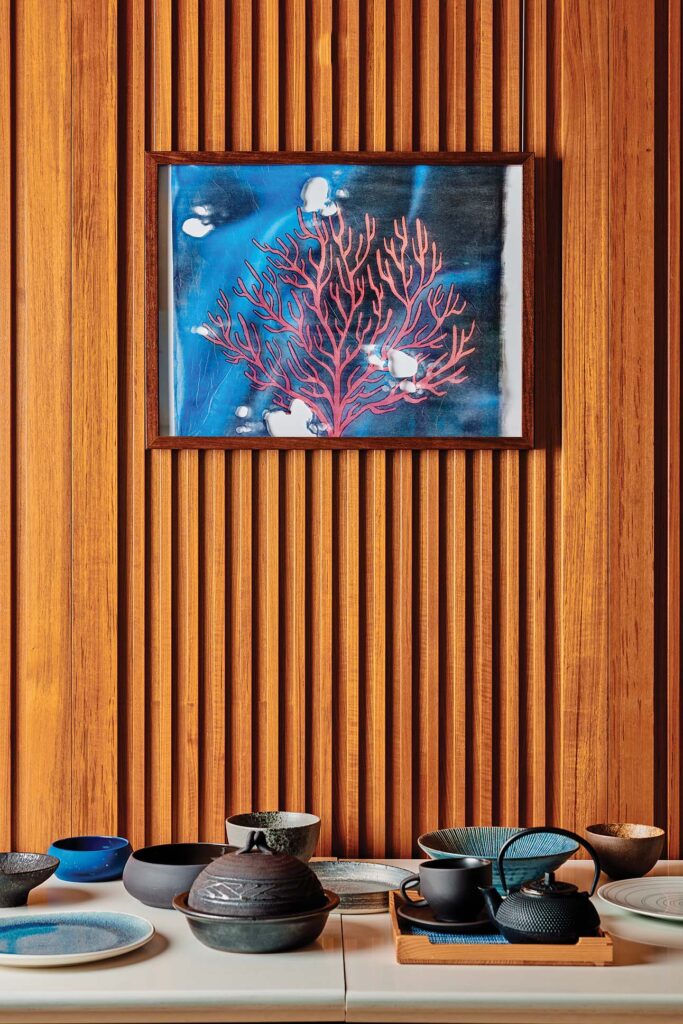
Vikram Garg arrives at his recently debuted flagship restaurant located at Halepuna Waikiki. Despite the regimented timeline of prep work ahead of him, he takes a moment to warmly greet guests in the dining area before heading into the kitchen. There awaits an attentive team, who has finished the mise en place an hour before. On the garde manger, twin rows of containers neatly display the contents within: delicate butterfly pea shoots and caviar-like finger lime, pickled fennel and sea asparagus—ingredients that speak to the global influences in UMI by Vikram Garg’s signature dishes.
Garg moves with calm precision and elegance, and his team follows en suite, the kitchen humming with efficiency. His leadership is apparent, but it’s his equanimity and approachability that shines brightest in the presence of his team. When he smiles, they smile too—a natural reflex. In Garg’s kitchen, the satisfaction of a dish well executed is one shared by all.
Wielding a pair of elongated tongs, Garg applies the finishing touches to a six-compartment treasure box of culinary delights. He scrutinizes each individual dish with exquisite care—spot-tasting the kampachi, deftly rearranging a delicate squid-ink tuile, adding a dash of yuzu vinegar—his expression a mixture of pride and pleasure.
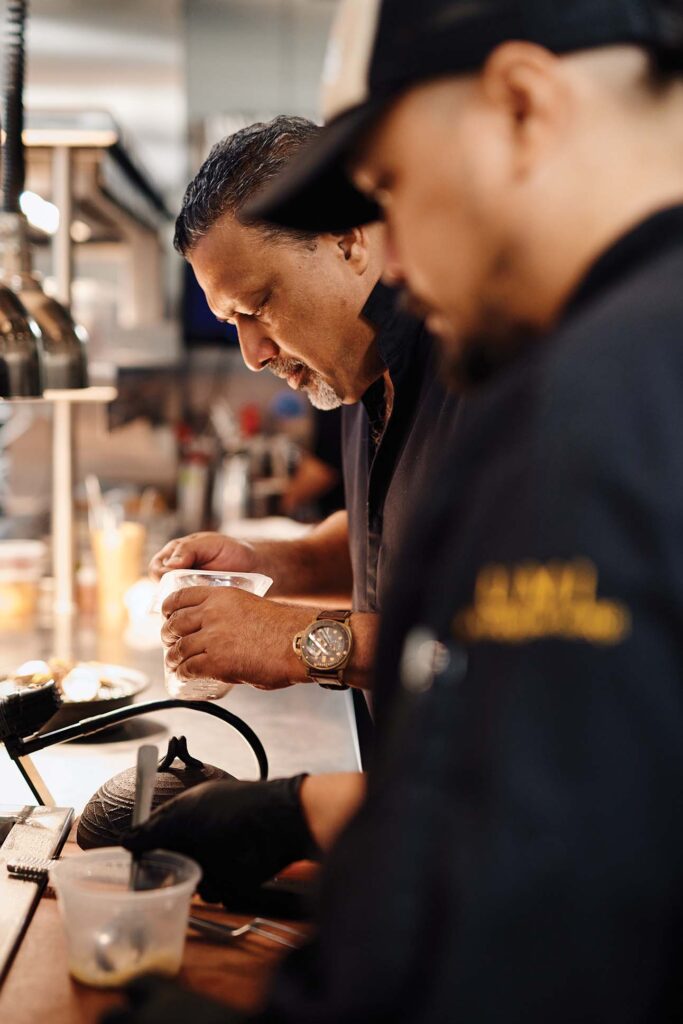
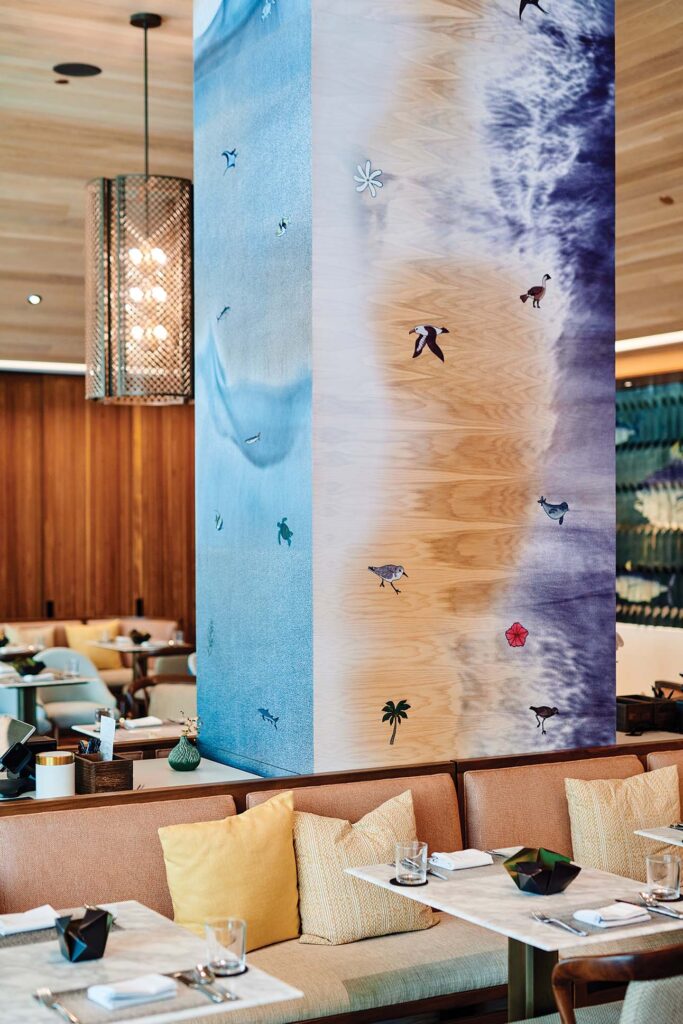
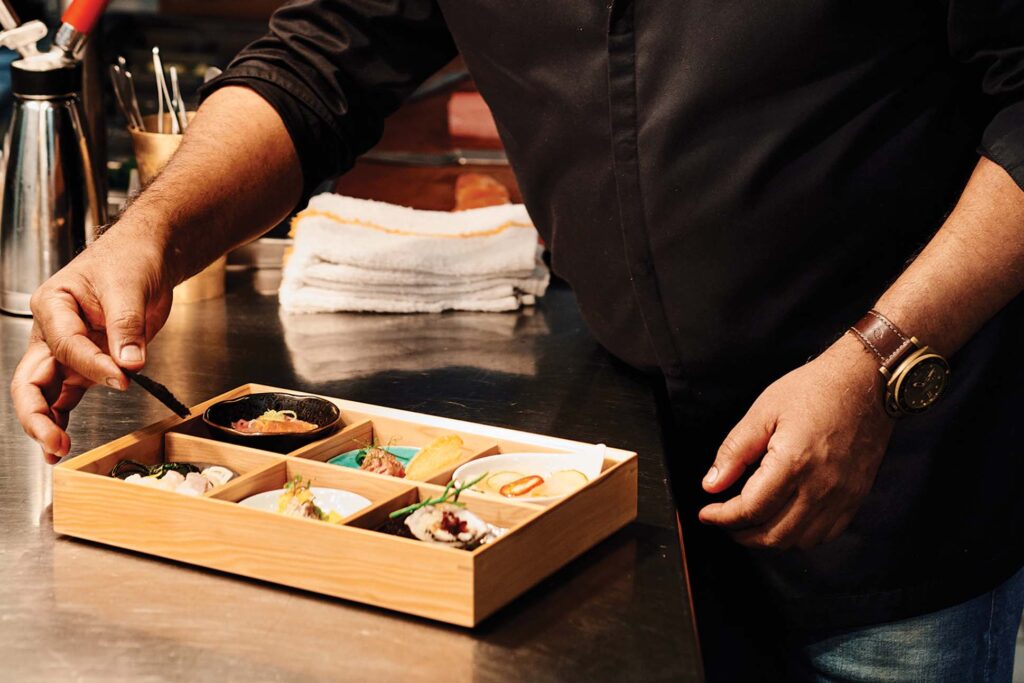
As a kid growing up in India, Garg loathed school but loved food. “Good food was a big focus for me,” Garg says, recalling family meals prepared with organic, seasonal ingredients. “My mom even made her own butter.” He would jump at the chance to eat at friends’ homes so he could try out different types of cuisines, and he eagerly accompanied his grandfather to street markets, where he could seek out new tastes and textures. “Even as a kid I wasn’t a picky eater,” Garg says. He chuckles, adding, “Doesn’t mean I would order it again.”
Yet, despite food being the fulcrum of so many childhood memories, Garg hadn’t initially considered a career in the culinary world. “In India in the ’70s, you go to school to become a doctor or an engineer,” Garg explains. “A chef? Not a thing to do.” Unlike his studious sisters, Garg balked at the idea of pursuing a traditional occupation and instead enrolled at the Institute of Hotel Management, Chennai. “I was like the black sheep of my family,” he says.
It was there that Garg had his “aha” moment. More than any other of his classes, Garg found himself drawn to “BTK,” or basic training kitchen courses in which students were taught the fundamentals of cooking—how to cut fish, how to make a sauce—before progressing into more advanced curriculum on preparing three-course menus and executing meals on a large scale. “I loved it,” Garg says, recalling the excitement of realizing that he could parlay his passion for food into a career as a chef.
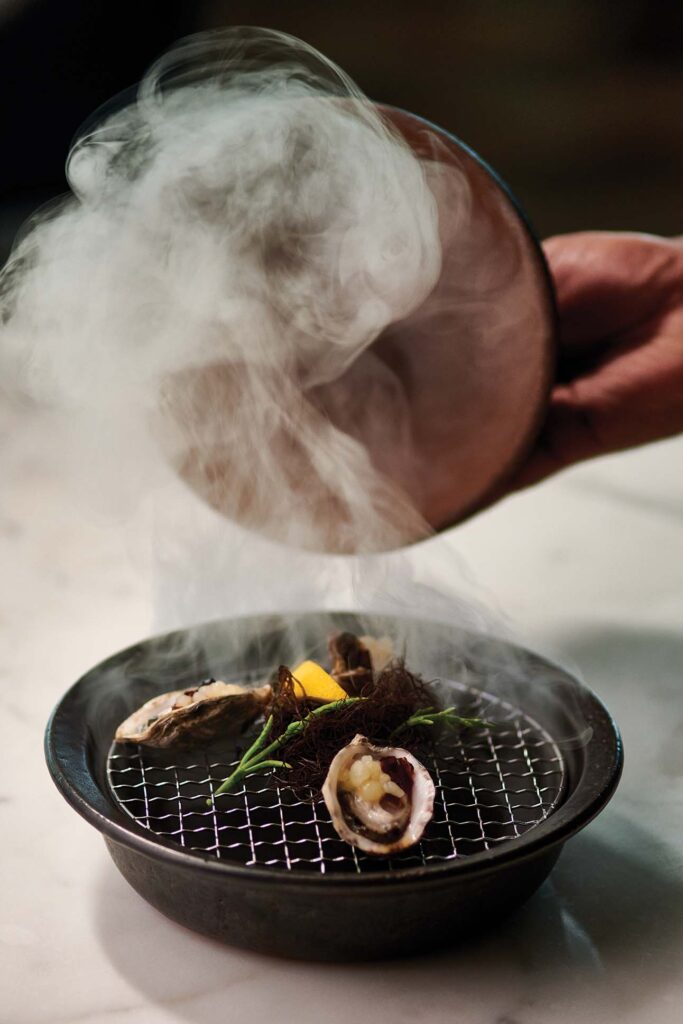
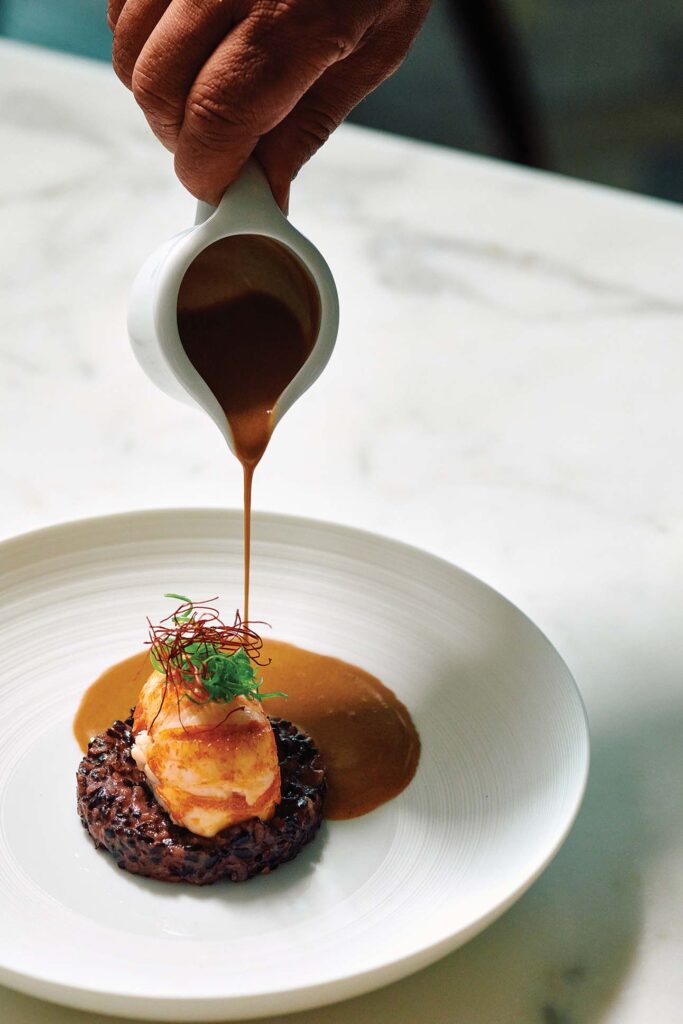
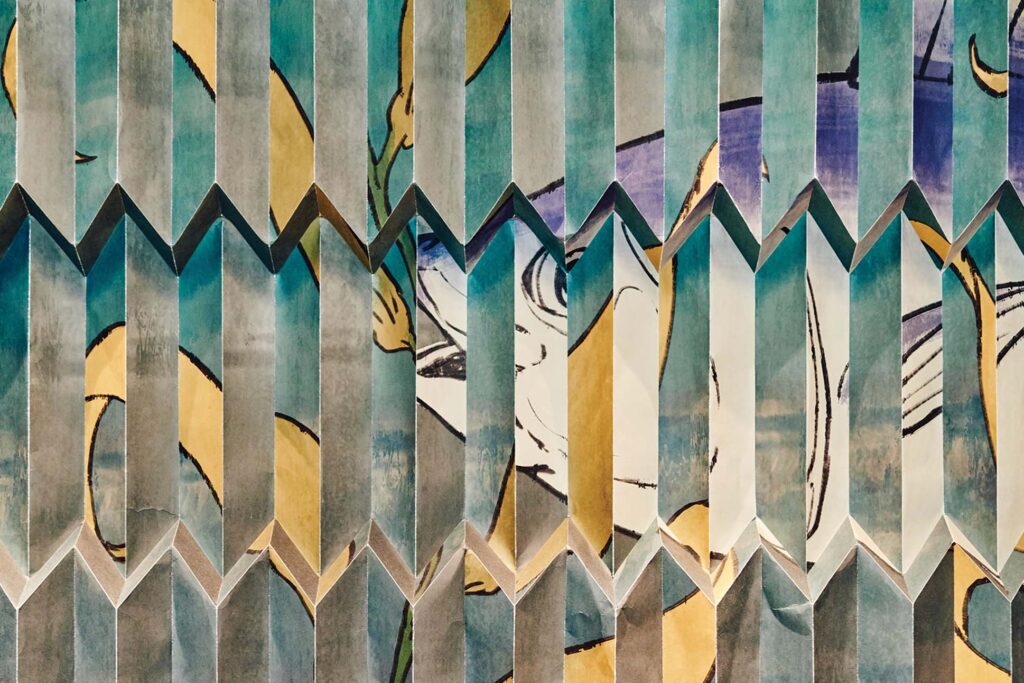
However, upon graduation, Garg found himself at a crossroads. His natural charisma and leadership skills dovetailed nicely with management and operations positions, earning him high marks and several post-graduation recruitment offers. “I was told my personality was more for the front of the house,” Garg says. “But I said, no, I want to be a cook.”
Over the next two decades, Garg built out an impressive culinary resume helming kitchens around the world, from Dubai and the Caribbean to France and the United States. When he first arrived in Hawai‘i to take on the role of executive chef at Halekulani, something clicked: Hawai‘i felt familiar, similar to the Andaman and Nicobar Islands where he had grown up.
Last year, when the opportunity arose for Garg to launch his first solo venture at Halekulani’s sister property, Halepuna Waikiki, that familiar feeling surfaced again. “Three decades of my life have been spent near water,” he says, realizing then that the decision was obvious. “I wanted to do a seafood restaurant.”
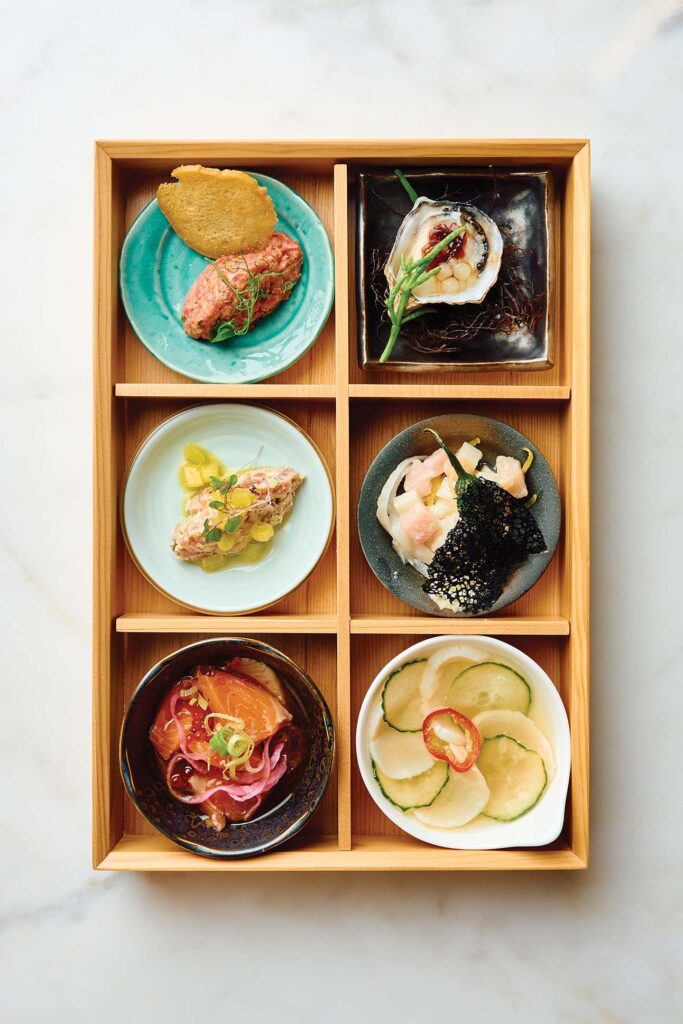
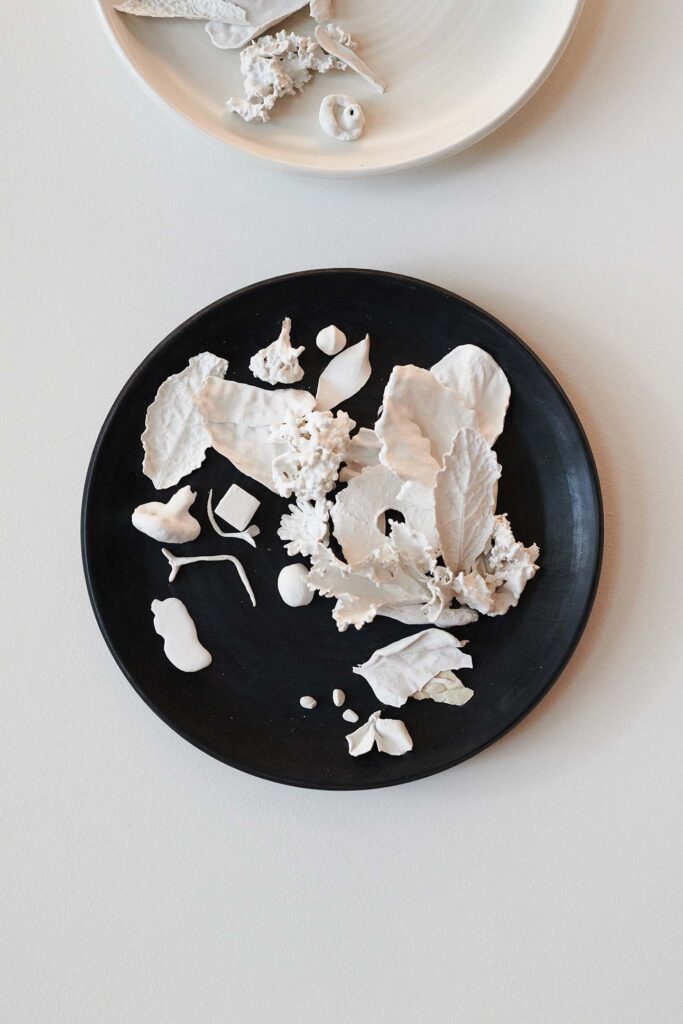
UMI by Vikram Garg, which gets its name from the Japanese word for “ocean” and Arabic term for “mother,” is an homage to Garg’s native India and adopted home of Hawai‘i. It speaks to Garg’s love for food and family, especially his mother, who was pivotal in introducing him to good food, and his deep appreciation of the ocean as a source of life and nourishment. In other words, UMI by Vikram Garg is a nuanced tribute to everything that made him who he is.
During a short break from the kitchen, Garg stands in UMI by Vikram Garg’s elegant dining room, a serene space filled with tawny gold accents and soft blue hues. On the far wall, a large-scale lenticular origami art installation by artist Taiji Terasaki depicts a school of fish within its geometric folds. The candles on the tables have been lit for the night’s dinner service.
When asked what his ten-year-old self would think about the restaurant, Garg pauses, considering the journey that led him here to Hawai‘i, to Halekulani, to UMI by Vikram Garg. “I think he’d be impressed,” Garg ventures. “And maybe he’d wonder, ‘Why didn’t you do this sooner?’”

